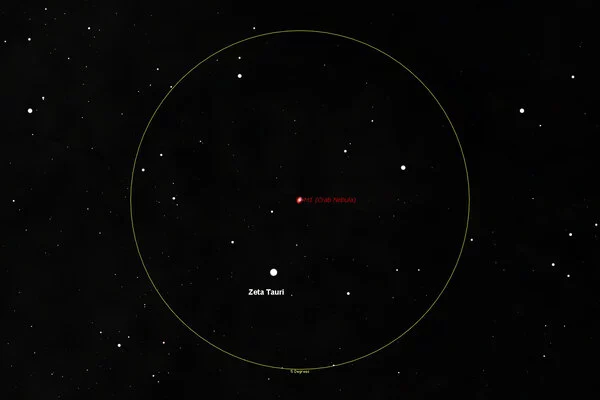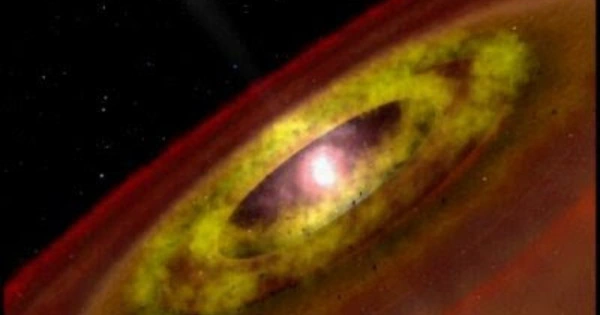UX Tauri, also known as UX Tau, is a binary star system located approximately 450 light-years away in the constellation Taurus. It is notable because, despite its recent (in stellar terms) birth, the Spitzer Space Telescope discovered a gap in its protoplanetary disk.
UX Tauri is a binary star located 450 light years from the Sun. It’s a two-star system. This system currently has no known exoplanets. Star formation occurs in molecular clouds, where the stellar density is higher than in the field, increasing the likelihood of encounters and dynamic interactions. The presence of other stars in the vicinity of a forming young stellar and planetary system can have a significant impact on disk morphology and evolution.
At distances ranging from 0.2 to 56 AU from the star, the dust, which normally accumulates in an expanding ring beginning right next to the star at such a young age, is either very thin or nonexistent. Typically, this means that planets are forming from the disk, despite the fact that the star only ignited about 1 million years ago. Earth, on the other hand, formed approximately 4.54 billion years ago, sixty million years after the Sun’s ignition around 4.6 billion years ago.

The UX Tauri system includes four T Tauri stars. It is located in the Taurus molecular cloud at d = 147 ± 2 pc. This system consists of a primary star (UX Tau A) and two companions: UX Tau B at to the west and UX Tau C at to the south of the primary. UX Tau B is itself a tight (∼01) binary. Kraus & Hillenbrand (2009) estimated the stellar masses at 1.3 ± 0.4 M⊙ for A and 0.16 ± 0.04 M⊙ for C. Zapata et al. (2020) report dynamical masses from CO data: 1.4 ± 0.6 M⊙ for A, and (0.067 ± 0.029/sin i) M⊙ for C. So far only the disk of UX Tau A has been detected. Andrews et al. (2011), using the Submillimeter Array (SMA), resolved an inner cavity around the central star extending to a radius of 25 au: the dust disk is a ring at 880 μm.
Tanii et al. resolved the disk at H band with SUBARU/HiCIAO in polarized intensity and detected scattered light emission all the way to the coronagraphic mask, that is, down to or r = 22 au. Unfortunately, the coronagraphic mask has a size similar to the millimeter-emission cavity and it is not known whether small dust (detectable in scattered light) is present in the millimeter cavity or not. The shape of the spectral energy distribution however led Espaillat et al. to identify UX Tau A as a so-called pre-transition disk, that is, a disk that shows a slight near-infrared (NIR) excess and significant excesses in the mid-and far-infrared. Interestingly, a Spitzer IRS spectrum revealed the absence of any silicate feature emission at 10 μm also implying a lack of small hot silicate dust grains in the disk.
















